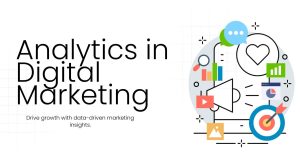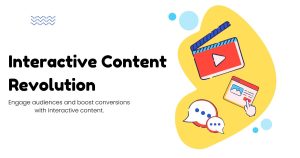Emotional Triggers in Marketing That Drive Action

Marketing isn’t just about selling a product. It’s about creating a connection. And what creates stronger connections than emotion? In every successful marketing campaign, there’s often an emotional pull that makes people stop, feel, and act. This emotional layer is what often drives decisions faster than logic does.
Understanding how emotional triggers in marketing work can give your strategy a real edge. If you want customers to not only notice your brand but also trust and buy from it, mastering these emotional cues is key.
Why Emotion Works Better Than Logic
When faced with a decision, people often believe they think it through. But in reality, emotion leads the way. Logic usually follows, acting more like a justifier than a driver.
For example, someone might say they chose a brand of shoes because of durability, but deep down, it was the feeling of confidence they imagined wearing them that sealed the deal. This invisible influence is powerful.
Emotions like trust, fear, happiness, and even anger can push people to act faster than any feature or benefit list ever could. To fully leverage these triggers, it helps to understand how emotional marketing works to capture hearts and drive sales.
The Science Behind Emotional Triggers
Emotion in marketing taps into basic human psychology. Our brain processes emotional information faster than rational thought. That’s why some ads can make you cry or laugh before you’ve even understood what’s being sold.
Studies show that people remember emotional content better. And when something makes them feel something — good or bad — they are more likely to talk about it, share it, and return to it.
That’s the kind of reaction that builds long-term brand loyalty.
Common Emotional Triggers and How They Work
Every feeling has a purpose. In marketing, certain emotions have been proven to cause specific actions. Here are a few of the most powerful ones.
Trust
People buy from brands they trust. You build this through honesty, consistency, and transparency.
If your marketing looks clean, your messaging is clear, and your actions match your words, trust builds over time.
Customer reviews, real testimonials, and straightforward return policies also help create this emotional foundation.
Fear
Fear doesn’t always mean terror. It often shows up as fear of missing out (FOMO), fear of loss, or fear of failure.
When used carefully, this trigger can drive urgency. Think of messages like “limited-time offer” or “only 2 left in stock.”
It creates tension that leads people to act fast — not later.
Belonging
Humans want to feel part of something. A good marketing campaign taps into that by making customers feel like insiders.
Brands that build communities around their products — whether online or in real life — keep their audience emotionally invested.
The sense of “us” versus “them” can turn casual buyers into loyal fans.
Happiness
If you can associate your product with joy, laughter, or good memories, your message will stick.
Bright visuals, upbeat music, and positive stories all help paint that feel-good picture.
When a customer feels happy looking at your ad or using your product, that emotion becomes part of the brand experience.
Guilt
Though it must be used carefully, guilt can also push people to act. For example, charity campaigns often rely on it.
By reminding someone what others are lacking or what might happen without their help, marketers can motivate support.
But guilt must be balanced. If it feels too manipulative, it can backfire.
Emotional Triggers in Real-World Ads
Think about major campaigns you remember. The ones that hit hardest usually leaned on emotion.
Apple focuses on creativity and belonging. Nike builds its messaging on challenge, perseverance, and self-worth. Coca-Cola connects its brand with joy and togetherness.
These campaigns don’t lead with features. They lead with feelings.
They aim to make you feel inspired, safe, understood, or energized — long before they tell you the price or specs.
Using Emotional Triggers in Your Marketing
It’s one thing to understand these emotions. It’s another to use them effectively. Here are some smart ways to apply emotional triggers in your strategy:
Know Your Audience Deeply
Before you can tap into emotion, you need to know what matters to your audience. What are their worries? What makes them smile?
Surveys, feedback, and social listening help uncover this. Once you know their emotional pain points or goals, speak directly to them.
Use Language That Connects
Words carry weight. Instead of just saying “best product on the market,” consider phrases like “trusted by thousands” or “built with care.”
Use stories and testimonials to make your product feel real. Let people picture themselves using it.
Visuals Matter
Images and colors affect emotion just as much as words do. Red can create urgency. Blue builds trust. Yellow suggests happiness.
Choose visuals that match the emotional tone of your message. They will reinforce the feeling you’re trying to create.
Don’t Fake It
One warning — emotional marketing only works if it’s authentic. People can feel when something is forced.
If your brand doesn’t truly support a cause, don’t pretend it does. If you don’t have a strong return policy, don’t promise one.
Your actions must back up your emotional appeal. If they don’t, the damage to your reputation can be long-term.
Long-Term Benefits of Emotional Marketing
Once customers connect with your brand on an emotional level, they stay longer, talk more about you, and trust you more deeply.
They don’t just remember what your product does — they remember how it made them feel. That memory is sticky. It keeps you top of mind even when logic says there are cheaper or newer options.
Brands that build these emotional connections also tend to see more word-of-mouth referrals. People naturally share things that move them.
Whether it’s happiness, pride, or empathy — if you made someone feel it, they’ll pass it along.
Final Thoughts
Emotional triggers in marketing are not tricks. They are reflections of real human needs and responses. When done right, emotional marketing respects those needs and uses them to build strong, meaningful brand relationships.
So instead of just selling a product, aim to tell a story. Share a feeling. Create a moment.
That’s how you go from being a brand people buy to a brand people believe in.





